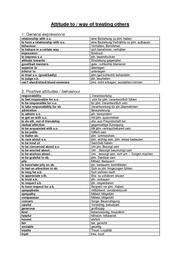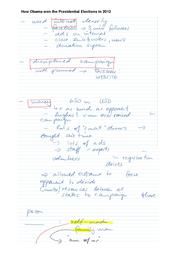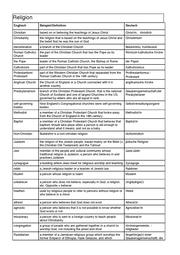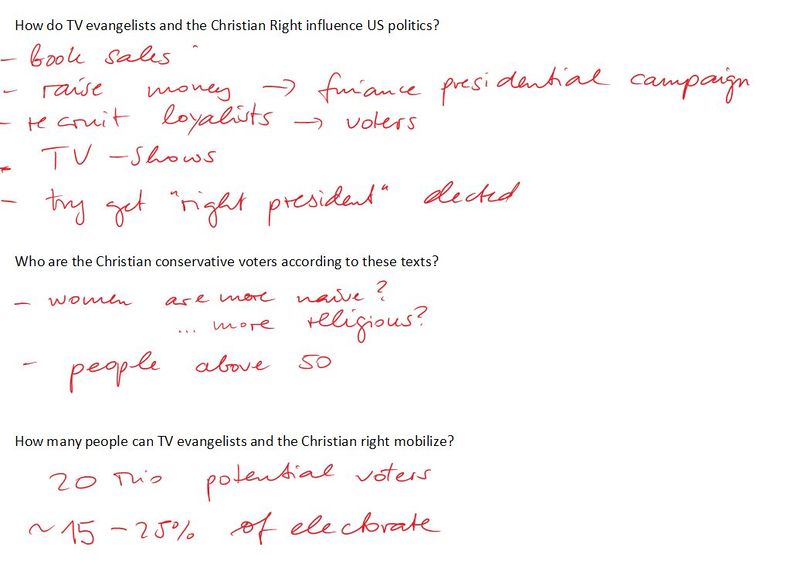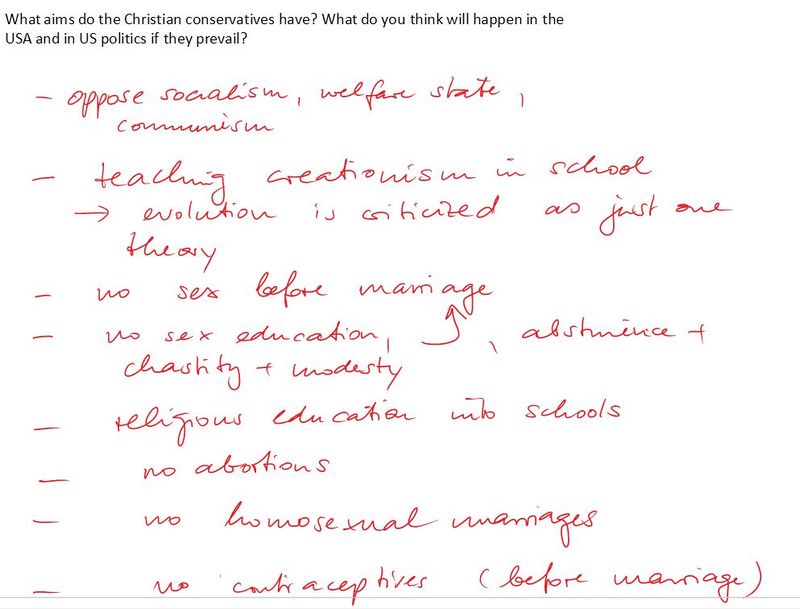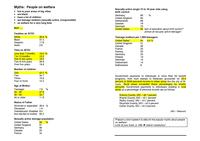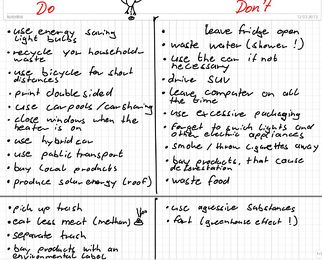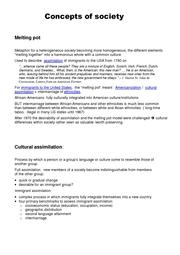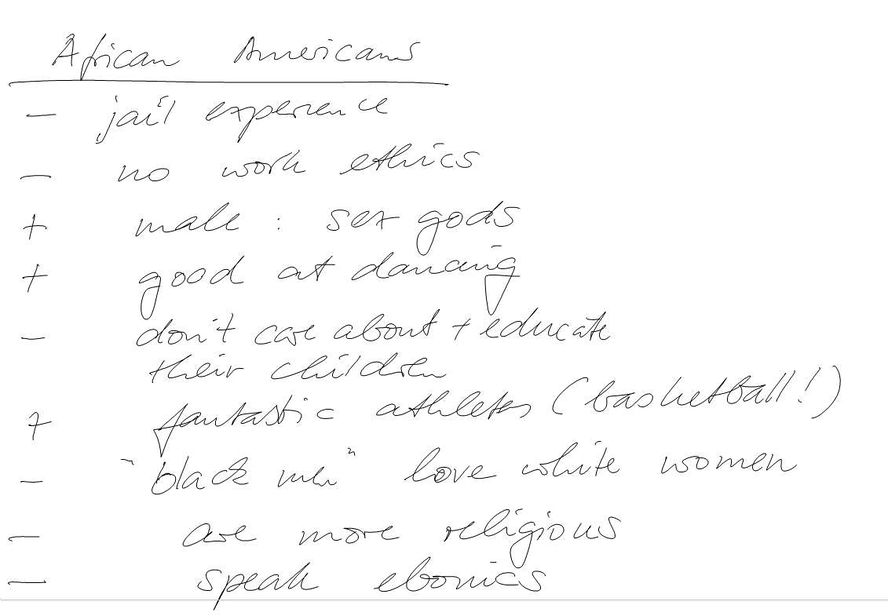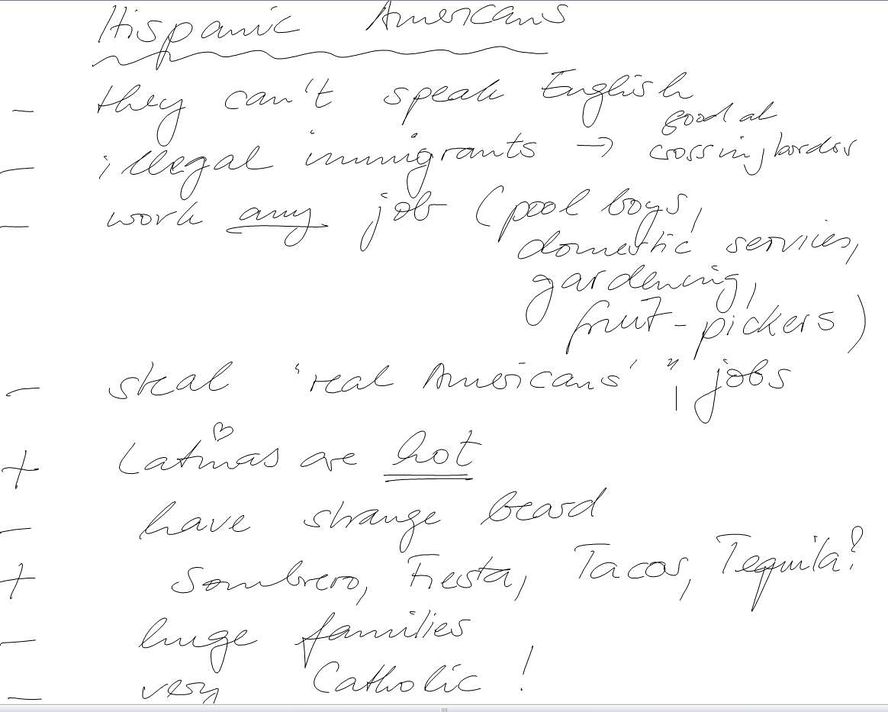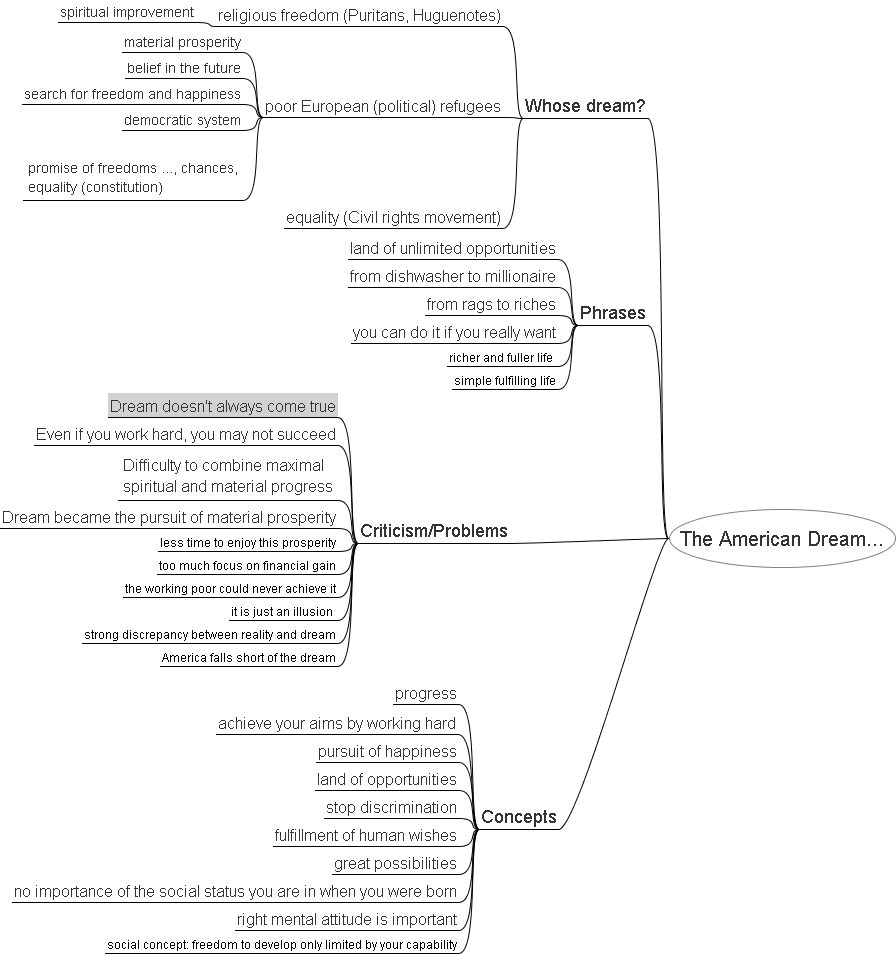Thelenberg 2011 12
Homework
Describe and analyse ONE of the two following cartoons:
Look at this information!!! and read the included guide before you start!
Recent Homework
Recent Homework has moved to a separate page!
Vocabeltest
Vokabeltest
- The test will be held on FRIDAY, 8 February 2013.
- The test will be held on the basis of ONLY ONE of the two vocab-sheets.
- The sheet relevant for the test is the one titled "Attitude to/Way of treating others"
It is strongly recommended that you also learn the vocabulary on the second sheet, as your descriptive skills needed for characterizations and descriptions definitely need to be improved!
Basic Skills & Information
- Information on homework and oral grades
- Reading and Marking technique - SQ3R Method A useful method to read, mark and annotate texts.
- Working with Cartoons
- A good speech/speaker ...
- Answering questions on the text
- Starting a paragraph
- Starting an Essay/Comment
- Writing an interview
- Mediation
- Translation (E→G)
- Characterization
- Building an Argument
US Political System
How Obama won the presidential elections in 2012
The summary of the lessons on this topic can be found in this PDF.
Useful Vocabulary
| Committee | Komitee, Ausschuss |
| politicians | Politiker |
| declare ones candidacy | Kandidatur ankündigen |
| campaign | (Wahl-)Kampagne |
| key states | Schlüsselstaaten |
| the primaries | die Vorwahlen |
| to pledge | sich verpflichten, schwören |
| delegate | Deligierter |
| the party convention | Parteitag |
| running-mate | ein Kandidat für die Vizepräsidentschaft |
| rival | Rivale / Konkurrent |
| state-by-state | staatenweise/ Staat für Staat |
| campaigning | |
| swing states | Bundesstaat mit hohem Wechselwähleranteil |
| televised debate | Fernsehdebatte |
| Voters | Wähler |
| electors | Wahlmann |
| electoral college | Versammlung aller Wahlmänner |
Religion in the USA and Britain
Vocabulary
Cartoon
.
Facts on Religion and Politics in the US
Special Religious Groups and Institutions
- (Evangelical) Mega-Churches
- church should not play the role of the state, but have clear positions
- against stem cell research
- against gay marriage
- against abortion
- some are liberal in enforcing their views
- 7,500 seats in church
- 11,000 congregants
Trends
- 72% of the Americans want their president to be clearly religious
- majority says churches should not endorse candidates
- half of the Americans think churches should express views on political matters
- 41% of the Americans want more religion in politics
- Americans are comfortable with showing their faith in public
- vote for candidates who aren't afraid to express their religious views
- only about 30% of Americans refuse gay marriage in 2003 - as compared to 41% in 1996
- about 25% are white evangelical christians and vote republican
- so many Americans believe that religion should not have any direct influence on and US politics but believe in religion being a privately exercised, individual matter
- many American Christians are not evangelicals and clearly want a more liberal, open-minded idea of Christianity and belief in God
Typical aspects/facts concerning religion in the USA
- US constitution strictly separates church and state
- US politicians - unlike their counterparts in Europe - often mention God in their speeches (God bless you, God bless America ...)
Influence of the Christian Right in the US
Cf. Book, p. 80/81
- Majority of conservative judges at US Courts appointed by Bush - hope for Religious Right?
- Religious Right fails at forcing schools to do school prayer and teach intelligent design.
- Religiously motivated influence on US Foreign Policy
- Most states forbid gay marriage while Washington refuses to include ban in Constitution
- Christian Right successful with ban on new stem cell research
- Supreme Court still rejects display of religious symbols in public institutions
TV Evangelism & Lakewood Megachurch
Watch the video at least two times!
Collect facts about:
- Lakewood "Megachurch"
- Joel Osteen's message
- the "Services"
- financial matters
What is your impression of Osteen and his church?
Why do you think is his church growing so fast?
Download Summary of facts about Osteen's megachurch
The Amish in the USA
Facts about the Amish (mainly from)
different about life, family:
- transport+farming with horses, mules
- work from dawn to dusk
- hard physical work: baling hay, picking beans + tomatoes
- animals are highly valued
- 6 children
- girls' dresses è modesty ...
- day starts with reading from the bible
- homeschooling (to be with them, not to lose contact, really educate them ...)
- work-ethic of children
- family/time with children valued very highly
- modern technology is not accepted if it threatens to break up the family or community or link the Amish too closely to the world outside - but "independent" gas refrigerators or a small generator just for the washing machine are allowed in some groups.
- Look at text1 and text2! They contain good information about the Amish
- Write an interview with an Amish!
- Start with a short characterization of the person you interview (name, appearance, why/when/where interview is done).
- Structure: question and answer form. Use interesting questions, make sure the answers fit the questions.
- Language: Make sure the register/style of interviewer and interviewee are appropriate (they may be different!) Remember to use "spoken language"!
- Last step: careful proofreading
- The interview should cover the topics of
- electricity
- using cars
- the clothes they wear
- attitude to tourists and being photographed!
Creationism
- Short summary of the text.
Muslims in Britain
Texts
- Problematic issues between British Muslims and the "Christian" majority
- A problem of perception: Muslims are well-integrated in Britain – but no one seems to believe it
- Reflections of a Former Islamist Extremist
- Read from beginnin to "And it's a very powerful grip on one's mind. And in my case it took years to shed that influence." (third box)
- Answers to book, p. 86/87 q. 5 + 6
- Why does a young muslim turn into an extremist?
- crucial event: death of thousands of European muslims in war in Bosnia in 90s! West just watches and doesn't help the muslims there. (Parallels to wars in Iraq .... muslims are being killed and no-one cares)
- Islam is cleverly presented as way of looking at history: like in Marxism it is always a struggle, them against us, bad against good, everybody against the muslims (idea of Western/Jewish conspiracy against Islam/muslims)
- at school/in university young muslims become part of an active, organized, outspoken movement ⇒ proud to be an active muslim, feeling of power, feeling of belonging to group and of changing the world.
Cartoon ⇐Klick!
- 4 frames, three show acts of violence/hatred committed in the name of Christianity/Western Civilization
- evangelical pastor [=church] burning Korans, evangelical/conservative politician [politics] against building mosque in USA, secret service agent [=government] torturing terrorist suspect)
- irony: they all want revenge/act as unchristian/intolerantly as those they accuse of doing this to them
- irony: preacher is completely stupid: of course "them folks don't act like Christians" - they simply aren't christians!
- preacher also doesn't seem to know his Bilble: "Jesus hates Mohammed" is absolutely like anthing Jesus preaches in the Bible: Jesus preaches love, peace and forgiveness - not hatred!
- picture four shows the result: children in USA have learned, that you needn't act as you wish others to act towards you (in civilized way, mercyfully, helpfully, tolerantly ...) but can do anything you want as long as nobody stops you.
- General criticism: christian/western preachers and politicians and governments do the same things they accuse terrorists and radical islamist of ⇒ they are no better than them
Society and Class
Hierarchy of needs - and the role of the individual in society
Class and Society in Victorian England
Questions on the text
- Try to characterize the two protagonists!
- How does the narrator influence the readers feelings towards the characters? (Give lines)
- What different attitudes towards class and marriage can you identify? (Give lines)
Watch from 6:40 to 9:00!
Definitions of "Class"
| Victorian Society = 3 classes: upper, middle, and lower/working |
|---|
|
Upper class = nobility, or peerage (dukes, earls, viscounts)
|
Welfare in the USA
- Look at the cartoon on welfare recipients!
- Write a short description and analysis!
- Give some thought to what is criticized and how people/attitutudes are shown to be wrong/absurd!
- Translate the elements in the cartoon into real objects (e.g. man stands for embittered public feeling they worked hard but now get a small pension)
Popular Myths: Who is on welfare?
Compare this page as source and for more analysis!
.
Welfare reform in the USA 1996 (cf book, p. 16/17)
Available Benefits
- cash welfare benefits
- Medicaid
- food stamps
- disability benefits
- TANF – Temporary Aid for Needy Families
| reasons | welfare reform 1996 - changes | effects of 1996 welfare reforms |
|---|---|---|
|
|
|
Talks
- Use your own words! (You may include some short, illustrating/fitting quotations ...)
- Write clear statements or questions and answers! Show and explain contrasts, problems, developments, cause and effects .....
- Use your computer's spellchecking!
System of Welfare in the USA (Hemmerlein)
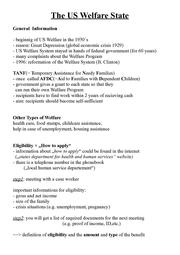
|
Criticism of Welfare, its recipients and its effects (Keupp)
Defence of Welfare and the people that depend on it (Brandl)

|
Welfare in Britain
- Watch the short video on Welfare in Britain twice.
- Take notes
Try to identify/explain
- the causes and effects of so many people being on welfare
- why it is so difficult to get people off welfare
- what measures are taken to achieve this
Ecology and Protecting the Environment
How green are you?
- Look at How green are you?
- Look through the test again an create a simple list of dos and don'ts!
- Prepare a short talk about at least 4 environmental dos and don'ts and tell people about your favourite!
Environmental DOs and DON'Ts
Zum Vergrößern mehrfach klicken und dann speichern ...!
Mixed society: Immigration, Ethnicity, Racism
Different concepts of a mixed society:
Multiculturalism - Does it work?
Facts
The ideal of multiculturalism: Pros and Cons
Book p. 51
- Multiculturalism is a failure as it leads to segregation and lack of assimilation into British culture
- Ghettoization and lack of intermarriage speak a clear language ⇒ no assimilation of some ethic groups
- Criticism of multiculturalism is not not racism, but an expression of the mainstream culture's efforts to defend against all otherness
- Not only immigrants, but all groups and classes live and socialize preferrably with people of a similar social type
- Most Britons think: Not mixing is okay as long as it doesn't threaten society, as long as general acceptance of British laws and culture is not in danger
.
Stereotypes
- ... are fixed, simple ideas or images that many people have of a particular type of person or thing
- ... often use simple criteria and give a simplified version of reality
- ... help us to categorize/distinguish between dangerous and harmless, attractive and unattractive, relieble - treacherous ...
- ... help us to understand and explain the world in a quick and simple way
- ... can be positive (men are strong) and negative (men don't have true feelings)
- ... are often very hard to change, even if experiences suggest thtat the stereotype may be wrong/to simple to explain complex realties or individual behaiviour
... against Asian Americans
What stereotypes about Asian Americans are there? Make a structured list (sex, positive/negative ...)
- Men
- + clever, hard working
- + technology-freaks, good with computers
- - nerds
- - not masculine/effeminate
- - not athletic
- - short
- Women
- + exotic (sexually attractive)
- + clever, hard working
- + submissive/demure
- - too clever(for many men), tricky
What effect do these stereotypes have on the way they are treated by others? Develop theories for at least 4 of the stereotypes you found!
... against African Americans
Positive or negative ..? - what effects?
... against Hispanic/Latino Americans
Positive or negative ..? - what effects?
Racism
A clever Way of Addressing racism ...
- What is the topic and message of this song?
- How does the artist try to sell his message cleverly? Look at the images and lyrics (To say what part of the video you are talking about, use the timecode, e.g. 3:32)
- What phrase/image do you like?
- How does it work?
- What rhetorical tricks are used?
Immigration
Buch 64/65 (Q 1): Typical features in lives of immigrants
- belief in American dream (job, house, provide for family)
- (parents) came to USA to have more opportunities/due to poverty in home country
- work
- first jobs in agriculture (fruit picking) or fast-food sector, textile industry
- children often have to work with parents
- often migrant workers
- often non-permanent, short-term employment
- low-paid jobs
- permanent resident or citizen status often through marriage with permanent resident or US citizen
- live simple lives, work hard, believe in American Dream
- often support other family members (in home countries)
- often not accepted/looked down upon by established/Caucasian US population
Pros and cons of immigration
- http://www.embraceni.org/migration/the-pros-and-cons-of-migration/
- http://www.balancedpolitics.org/immigration.htm
- http://www.europeaninstitute.org/20060902138/Fall/Winter-2006/polish-migrants-to-britain-pros-and-cons.html
- http://boomerous.sb.siliconmtn.com/docs/taking_sides/immigration/pros_and_cons.html
| PROS of immigration | CONS of immigration |
|---|---|
|
|
.
The American Dream!
Links
.
Mindmap: The American Dream
Madonna: American Life
Explain the function of the massive use of questions in "American life"!
Collected Ideas
- Make audience think about questions
- Express a generally doubtful attitude about the American dream
- What do I have to live the American dream?
- Express the insecurity of the speaker
- all the changes in questions affect how you are seen by others
Final answer
In Madonna’s song American life are many questions that have a special meaning. Generally these questions express a doubtful attitude towards the American dream, which is not clearly defined. The speaker wonders if the attitude of the American dream fits him/her at all. (l. 7) Furthermore he wonders what she has to do to live the American dream and even thinks about changing her name. (l. 1) This shows the extreme insecurity of the speaker, who is almost willing to give up her identity. Doing this would all mean to change the impression that you make on other people. Audience may find that opportunistic or at least strange or sad. All in all these questions aim at making the reader doubt the American dream and try to find answers to these questions. Some readers may see themselves in these lines and critically rethink their own attitude towards the American dream.
.
What is the special effect of the rap section (2nd part of song)?
Tone and Content
- machine-like sound of the rap part
- shows how fast modern life moves on
- list of fashionable or trendy materialist items/ goods that you must have ==> critisism
- speed of song is confusing as modern life is
- contrast between first and second part of the text: doubts vs. reality of the American Dream
- contrast between "I am satisfied" (repeated 4 times) and "Do you think I am satisfied ?"
- "I just realized that nothing is what it seems" finally shows her attitude towards the American Dream, which is not what it should be
Globalization
Definition and Key Facts
Book, p. 178
History / 3 Phases of Globalization
Globalzation 1.0 (first phase/era) - 1492 (Columbus) until around 1800
- world got connected, shrank from size L to M
- trade between Old World and New World
- countries' power defined by use of horse power/wind power/steam power/ (horses, ships, engines)
- aim: to fit into global competition
- motivation often religion / imperialism
Globalization 2.0 (second era) - 1800 to 2000
- interrupted by the Great Depression, World War I and II
- world got more connected, shrank from size M to S
- industrial revolution and multinational companies (e.g. East India Company) as most dynamic forces
- global integration ⇐ breakthroughs in hardware development
- 1. falling transportation costs (steam engine, railroad, cars, airplanes)
- 2. falling telecommunication costs (telegraph, telephone, PC, satellites ...)
- development of really global economy massive movement of goods and information
Globalization 3.0 (third era) - from 2000 to …
- world got even more connected, shrank from S to XXS and countries got even closer
- newfound power for individuals to communicate, collaborate, compete globally
- key developments:
- - fiber-optic cable + Internet + work flow software + mobile computing
- - final end of simple East/West division
- ⇒ very small, flattened world/playing field (many forces on same level, even individuals are very powerful)
- - China has become more powerful
- - now much more diverse, non-white, non-European influences ⇒ West no longer dominant in globalization
Source: Friedman. The three eras of globalization (Book, p. 176f) .
Pros and Cons
- Globalisation: Pro - Con 1
- Globalisation: Pro - Con 2
- Book, p. 178
.
Talks
Globalisation and the Internet
- http://www.bivingsreport.com/2004/globalization-the-internet-and-public-opinion/ ++
- http://ezinearticles.com/?The-Internet---Opening-the-Gates-For-Globalization&id=2246916 ++
- http://blogalize.typepad.com/micro/2011/11/apple-globalization-using-the-ipod-to-explain-globalization.html
- http://en.wikipedia.org/wiki/Globalization#Internet
Globalization and culture
- http://en.wikipedia.org/wiki/Globalization#Culture
- http://independent.org/newsroom/article.asp?id=2258
- http://www.globalization101.org/uploads/File/Culture/cultall2011.pdf
Obesity
Talk: Why our food is making us fat
